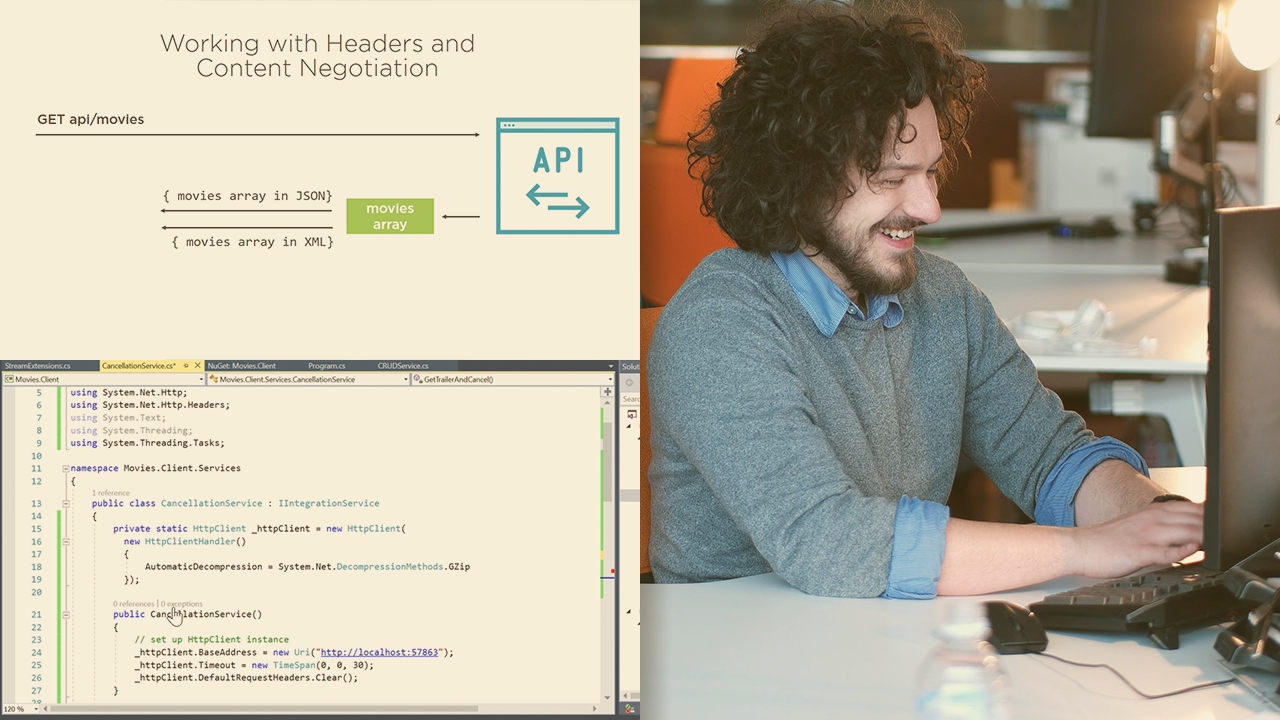- Course
Using HttpClient to Consume APIs in .NET Core
In this course you’ll get an in depth look at using HttpClient and HttpClientFactory to integrate with an API, from basic CRUD operations over streaming and compression to dealing with errors and extending HttpClient with custom message handlers.

- Course
Using HttpClient to Consume APIs in .NET Core
In this course you’ll get an in depth look at using HttpClient and HttpClientFactory to integrate with an API, from basic CRUD operations over streaming and compression to dealing with errors and extending HttpClient with custom message handlers.
Get started today
Access this course and other top-rated tech content with one of our business plans.
Try this course for free
Access this course and other top-rated tech content with one of our individual plans.
This course is included in the libraries shown below:
- Core Tech
What you'll learn
Applications, ranging from ASP.NET Core web apps over mobile Xamarin apps and Windows apps to Console apps often integrate with an API. For that, HttpClient is the default and best option. But there’s a lot more to using it than just sending a request and reading out the response. In this course, Using HttpClient to Consume APIs in .NET Core, you’ll get an in-depth look at using HttpClient and HttpClientFactory, from the internals over basic CRUD interaction to working with streams and compression. We’ll also cover cancelling requests that are no longer needed.
Additionally, you’ll learn how to use custom message handlers to improve the reliability of your requests and to unit test.
After this course, you'll know the ins and outs of integrating with an API from a variety of application types.

